The insane killer theory
The succession of murders in the autumn of 1888 in London's East End, and inefficient verification of the authorities in charge of capturing the perpetrator, led the press and ordinary people to make up various hypotheses. One of the most vogue theories argued that an unbalanced psychopath was behind the gruesome killings and subsequent mutilations.
The police of the time, much like the public opinion, was reluctant to accept that the monstrosities committed of such caliber could've been consummated by a person of sound judgment. Certainly, it couldn't have been a cultured or intelligent individual, but rather an ignorant brute. Better yet: a psychopath affected by venereal diseases or alcoholism that rushing towards a brain disorder.
Whatever the reason, the evil was not in the nature of men, but in the unfortunate insanity with which the life had punished these women, a xenophobic panic led citizens to believe that no Englishman could've been the culprit.
Therefore, in the collective imagination, only one crazed man - who was also of foreign origin - represented the perfect candidate to be the prostitutes' killer.
Reviewing the recorded facts, several mentally alienated were syndicated as responsible for the crimes. In this context, it led to the arrest, hospitalization and subsequent suspicion, which fell upon the unfortunate Jacob Isenschmid. [2]
Links with Jack the Ripper
On 13 September 1888 London police arrested a man at his home in Milford Road, in the Holloway neighborhood. The arrested man was a butcher; that is to say, one who sold pieces from sheep and cattle, seasoned for use in refrigerators.
A couple of days ago, on 11 September, two Whitechapel doctors had denounced him because of his strange habits, suggesting he could be the killer who operated in the region. In the first attempted arrest, authorities were greeted by Isenschmid's spouse, since he was not present at the time.
Even more convincingly, the complaint of the doctors would result in the suspect's own wife's statements. The woman alleged that two months ago, her husband had left their home, and only returned sporadically without any notice. She stressed that he had a violent and ungovernable character, and used to carry large and sharp knives on him - even when it did not require practise of his trade. She also claimed that he had threatened to kill her once.
Apparently, the butcher had normal behavior until the previous year, when the failure of his business plunged him into serious depression. The following year, still in that state, he would become aggressive, committing wild attacks against women in the area.
It was learned that Isenschmid had undergone prolonged hospitalization in a hospice, because he suffered from severe psychiatric disorders. A new medical review found him completely demented, and examining forensics diagnosed him as insanely dangerous. After his arrest, the justice ordered that he be imprisoned in a mental institution, and was referred to the hospital on Fairfield Road.
As soon as his arrest reached the ears of the press, the version that, without a doubt, the prisoner was the fierce criminal, and that the savage mutilations inflicted on the bodies were due to his mental disorders.
With sensational headlines, the newspapers reported on the apprehension of the offender who was nicknamed "The Whitechapel Killer" at that time, and made sure that the killer of the prostitutes was none other than "The Crazy Butcher".
However, the falsity of such accusations would soon be exposed, given that the suspect was imprisoned when the murders of Elizabeth Stride and Catherine Eddowes occurred, in the early hours of 30 September 1888; then he was definitely ruled out as the serial killer. [3] [4]

Annie Chapman was the second canonical victim of the notorious unidentified serial killer Jack the Ripper, who killed and mutilated a minimum of five women in the Whitechapel and Spitalfields districts of London from late August to early November 1888.

A series of murders that took place in the East End of London from August to November 1888 have been attributed to an unidentified assailant nicknamed Jack the Ripper. Since then, the identity of the killer has been widely debated, with over 100 suspects named. Though many theories have been advanced, experts find none widely persuasive, and some are hardly taken seriously at all.
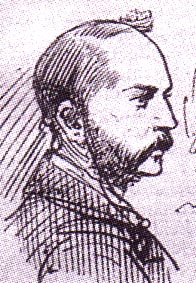
Frederick George Abberline was a British chief inspector for the London Metropolitan Police. He is best known for being a prominent police figure in the investigation into the Jack the Ripper serial killer murders of 1888.

The "Saucy Jacky" postcard is the name given to a postcard received by the Central News Agency of London and postmarked 1 October 1888. The author of the postcard claims to have been the unidentified serial killer known as Jack the Ripper.
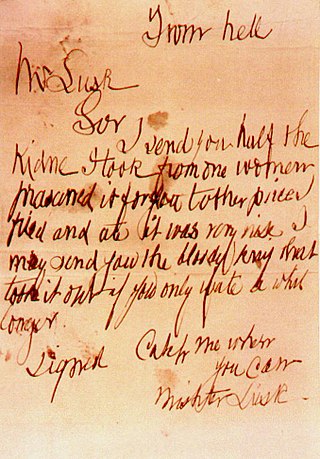
The "From Hell" letter was a letter sent with half of a preserved human kidney to George Lusk, the chairman of the Whitechapel Vigilance Committee, in October 1888. The author of this letter claimed to be the unidentified serial killer known as Jack the Ripper, who had murdered and mutilated at least four women in the Whitechapel and Spitalfields districts of London in the two months prior to Lusk receiving this letter, and whose vigilance committee Lusk led in civilian efforts to assist the police in identifying and apprehending the perpetrator.

Martha Tabram was an English woman killed in a spate of violent murders in and around the Whitechapel district of East London between 1888 and 1891. She may have been the first victim of the unidentified serial killer Jack the Ripper.
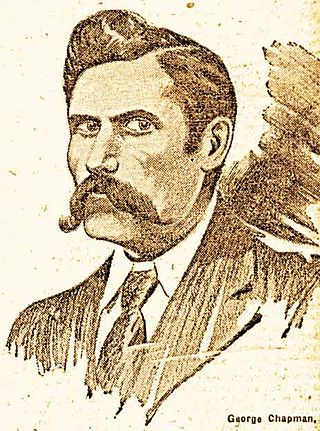
Seweryn Antonowicz Kłosowski, better known under his pseudonym George Chapman, was a Victorian era Polish serial killer known as the Borough Poisoner.

The Whitechapel Vigilance Committee was a group of local civilian volunteers who patrolled the streets of London's Whitechapel district during the period of the Whitechapel murders of 1888. The volunteers were active mainly at night, assisting the Metropolitan Police in the search of the unknown murderer known as the "Whitechapel Murderer", "Leather Apron" and, latterly, "Jack the Ripper".

Sir Melville Leslie Macnaghten was Assistant Commissioner (Crime) of the London Metropolitan Police from 1903 to 1913. A highly regarded and famously affable figure of the late Victorian and Edwardian eras he played major investigative roles in cases that led to the establishment and acceptance of fingerprint identification. He was also a major player in the pursuit and capture of Dr. Crippen, and of the exoneration of a wrongly convicted man, Adolph Beck, which helped lead to the creation of the Court of Criminal Appeal in 1907.

Jack the Ripper was an unidentified serial killer who was active in and around the impoverished Whitechapel district of London, England, in 1888. In both criminal case files and the contemporaneous journalistic accounts, the killer was also called the Whitechapel Murderer and Leather Apron.

The Whitechapel murders were committed in or near the impoverished Whitechapel district in the East End of London between 3 April 1888 and 13 February 1891. At various points some or all of these eleven unsolved murders of women have been ascribed to the notorious unidentified serial killer known as Jack the Ripper.
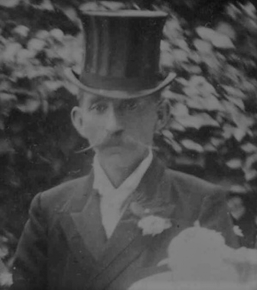
Joseph Lawende was a Polish-born British cigarette salesman who is believed to have witnessed serial killer Jack the Ripper in the company of his fourth victim, Catherine Eddowes, approximately nine minutes before the discovery of her body on 30 September 1888.

Seven Murders for Scotland Yard is a 1971 Italian-Spanish giallo film directed by José Luis Madrid and starring Paul Naschy, Patricia Loran and Renzo Marignano. Naschy and Madrid wrote the screenplay, Tito Carpi's name was simply added to the credits to satisfy the requirements for a Spanish-Italian co-production. The film was shot in June 1971, and was first released in Italy in 1971 as Sette Cadaveri per Scotland Yard / Seven Corpses for Scotland Yard. It was shown in Spain on July 10, 1972, as Jack el destripador de Londres, and finally wound up theatrically released in the U.S. in 1976 as Seven Murders for Scotland Yard. The Mexican one-sheet poster simply called the film Jack el distripador/ Jack the Ripper.

Michael Ostrog was a Russian criminal and Jack the Ripper suspect, first proposed in a memorandum by Sir Melville Macnaghten in 1894.
James Thomas Sadler, also named Saddler in some sources, was an English merchant sailor who worked as both a machinist and stoker. In 1891, the then-53-year-old was accused of killing prostitute Frances Coles. Sadler was placed under arrest, and a mob almost lynched him at the exit of a police station. Eventually, he was dismissed by police for having a solid alibi, and obtained compensation from a newspaper that had branded him as Jack the Ripper.
Carl Ferdinand Feigenbaum, alias Anton Zahn, was a German merchant seaman, occasional florist and alleged serial killer executed at Sing Sing Prison in 1896. His crime was murdering his landlord, and contemporary hypotheses accuse him of being Jack the Ripper.

Joseph Barnett, also known by his nicknames Danny Barnett and Joe, was a fish porter who worked at Billingsgate Market in the 19th century, located in the East End of London, and later became known for being the roommate of Mary Jane Kelly. It was not suspected that he had murdered her and, even less, that he was Jack the Ripper, until the 1970s, when he was added to the growing list of more than 100 people that someone has speculated could be Jack the Ripper.
George Hutchinson was an English worker who made a formal statement to police after the murder of Mary Jane Kelly on 9 November 1888. Kelly had been the last of the "Canonical Five" connected to the Whitechapel Murders in London. The statement survives in its entirety and in it, he provided an exhaustive description of a man who could have been Kelly's killer, known as Jack the Ripper. Modern crime writers have since questioned the veracity of Hutchinson's testimony, which has been characterised as antisemitic and suspiciously detailed, especially when considering that the scene supposedly took place in an unlit street at night. Hutchinson has been variously deemed an inaccurate or even false witness, with some true crime authors regarding him as a possible Jack the Ripper suspect.
Thomas Hayne Cutbush (1864–1903) was a contemporary suspect for the identity of the serial killer known as Jack the Ripper, as he was accused by the British press shortly after the 1888 murders.
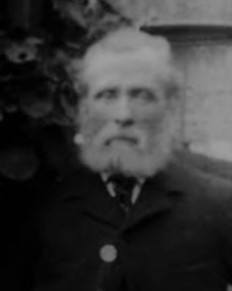
Charles Allen Lechmere, also known as Charles Allen Cross, is a Jack the Ripper suspect who was a native of East London and reportedly worked as a carman for the Pickfords company for more than 20 years. On 31 August 1888, Lechmere apparently found the body of Mary Ann Nichols, the first of Jack the Ripper's five canonical victims, while on his way to work. Although long regarded as merely a passer-by at the crime scene, Lechmere has since been named as a Jack the Ripper suspect by contemporary true crime writers.















